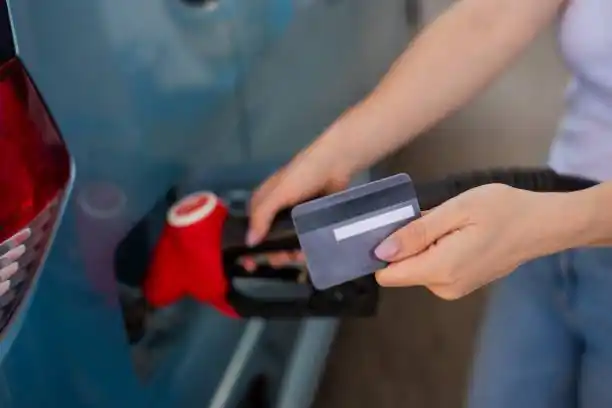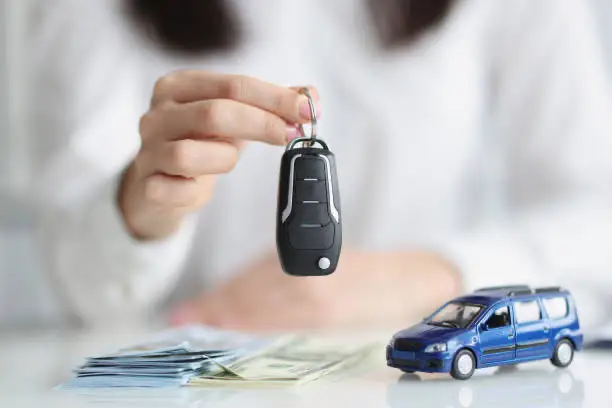- How to Improve Your Nissan Kicks' Fuel Efficiency Today
- Understanding the 2018 Kicks' Fuel Economy Ratings
- Modern Alternatives:2025's Fuel-Efficient Crossovers
- FAQ
Your search for effective ways to improve the nissan kicksUAE Nissan KicksBahrain Nissan KicksKSA Nissan KicksOman Nissan KicksQatar Nissan KicksEgypt Nissan KicksKuwait Nissan Kicks 2018 fuel consumption ends here. In just a few simple steps, you can enhance your vehicle's performance on both city streets and highways. Read on for expert tips, maintenance secrets, and comparisons with modern alternatives.
How to Improve Your Nissan Kicks' Fuel Efficiency Today

3 Immediate Actions for Better MPG
Maintain Tire Pressure: Check your tire pressure regularly, as driving with underinflated tires can reduce fuel efficiency by nearly 3%. Keeping your tires at the recommended 33 PSI ensures you get the best possible mileage.
Engage ECO Mode: The Nissan Kicks offers an ECO mode designed to optimize performance during stop-and-go traffic or steady cruising above 60 km/h. Use the mode particularly when you are driving light loads or navigating busy city traffic.
Eliminate Extra Weight: Simplify your ride by removing unnecessary items such as roof racks, heavy trunk cargo, or aftermarket additions. Reducing weight can lower fuel consumption by an estimated 2-5%, making each drive more economical.
Long-Term Maintenance for Optimal Fuel Economy
Regular maintenance is a key factor in sustaining a top-notch fuel economy. Follow these maintenance intervals to keep your Kicks running efficiently:
Service Interval | Key Action | Fuel Savings Impact |
|---|---|---|
Every 16,000 km | Replace the air filter | Enhances MPG by 7-10% |
Annually | Clean the fuel injectors | Improves efficiency by 3-5% |
Every 80,000 km | Replace spark plugs | Avoids a 4-6% drop in fuel use |
Understanding the 2018 Kicks' Fuel Economy Ratings

Official vs. Real-World Performance
The 2018 Nissan Kicks features a 1.6L 4-cylinder engine that has been tested to achieve:
City Driving: Approximately 7.8L/100km
Highway Cruising: Around 6.4L/100km
Combined Average: Roughly 7.1L/100km
Drivers in busy urban areas have reported figures that may vary slightly from official ratings. For instance, actual consumption in city traffic can range from 8.2 to 8.9L/100km, while highways might see figures between 6.7 and 7.2L/100km. Depending on driving habits and local fuel quality, your experience might differ slightly. It is always a good idea to keep an eye on your fuel economy with each season.
Fuel Tank Range Details
Understanding your fuel tank capacity can help manage refuelling stops more effectively:
40L Fuel Tank:
City range reaches up to 595 km
Highway range extends to about 735 km
Combined driving offers around 660 km of range
Modern Alternatives:2025's Fuel-Efficient Crossovers

Considering Hybrid Options
While you work on optimizing your 2018 Kicks, you might also be interested in exploring more fuel-efficient 2025 models. Modern hybrid alternatives provide even lower fuel consumption and advanced eco-friendly features:
KSA Toyota YarisOman Toyota YarisQatar Toyota YarisUAE Toyota YarisBahrain Toyota YarisEgypt Toyota YarisKuwait Toyota Yaris Cross Hybrid: Boasts a consumption as low as 4.1L/100km
UAE Hyundai KonaKSA Hyundai KonaKuwait Hyundai KonaQatar Hyundai KonaBahrain Hyundai KonaOman Hyundai KonaEgypt Hyundai Kona Hybrid: Offers around 4.4L/100km
E-Tech: Achieves close to 4.3L/100km
These models not only offer improved MPG numbers but also come with the latest technology designed to reduce emissions and maintenance efforts.
Practical Cost-Saving Insights
Consider a simple cost-saving calculator for an annual distance of 15,000 km:
For the 2018 Nissan Kicks, estimated fuel expenses might be around AED 2,130 or SAR equivalent (based on AED 3.00/L or SAR equivalent pricing).
A newer hybrid model could lower that to an average of AED 1,845 or SAR equivalent.
Over a 7-year period, these savings can amount to over AED/SAR 2,000, which makes a significant impact on your overall expenses.
Pro Tip: Combine multiple errands into one trip whenever possible. Starting a cold engine multiple times uses up to 20% more fuel than keeping the engine warm, and parking in shaded areas can reduce the air conditioning workload during hot days.
FAQ

1. How can I further improve the fuel efficiency of my 2018 Nissan Kicks?
Maintaining proper tire pressure and engaging the ECO mode are two of the most effective ways to improve fuel efficiency. Regular servicing, such as air filter replacements and fuel injector cleanings, also plays a crucial role. Avoiding unnecessary weight and planning your trips can make a measurable difference. Consider setting reminders for essential maintenance tasks to ensure that your car always runs at its best.
2. What real-world fuel economy should I expect when driving in mixed city and highway traffic?
Real-world fuel economy can vary depending on your driving habits and road conditions. Many drivers report figures slightly higher than the official ratings, especially in city traffic where stop-and-go conditions prevail. Your practice of regular maintenance and using fuel-saving techniques will help get you closer to the best possible averages. Always monitor your fuel consumption to adjust your driving style accordingly.
3. Are hybrid alternatives truly more efficient compared to the 2018 Nissan Kicks?
Hybrid vehicles offer significant improvements in fuel efficiency by combining electric motors with traditional engines. Models like the Toyota YarisKSA Toyota YarisOman Toyota YarisQatar Toyota YarisUAE Toyota YarisBahrain Toyota YarisEgypt Toyota YarisKuwait Toyota Yaris Cross Hybrid and Hyundai KonaUAE Hyundai KonaKSA Hyundai KonaKuwait Hyundai KonaQatar Hyundai KonaBahrain Hyundai KonaOman Hyundai KonaEgypt Hyundai Kona Hybrid present lower consumption rates, often around 4.1 to 4.4L/100km. These alternatives not only cut down on fuel use but also reduce emissions. They represent a modern solution for drivers looking for both efficiency and sustainability.
4. How do service intervals impact my Nissan Kicks' fuel economy?
Regular maintenance has a marked impact on fuel consumption. Following the recommended service intervals, such as air filter replacements every 16,000 km or annual fuel injector cleanings, ensures the engine is running optimally. This attention to detail can boost MPG by up to 10% in some cases. Over time, these small improvements add up to substantial savings on fuel costs.
5. What steps can I take to make each trip more fuel-efficient?
You can start by planning your route to avoid heavy traffic and combining errands into one trip. Utilizing the ECO mode and ensuring that your vehicle is not carrying extra weight will also contribute significantly. Regular maintenance and adjusting your driving style, such as keeping a steady speed when possible, can improve overall fuel consumption. Remember, small changes in your daily routine can lead to noticeable savings over time.
Note:This article is intended for reference purposes only. Please adhere to the latest local laws and regulations.
Read More:
2025 Toyota Corolla vs Nissan Sunny:Compact Car Buying Guide
Reducing Toyota Corolla Gas Mileage: 2025 Guide
2025 Toyota Hiace Tank Capacity:Every Driver Should Know
2 / 21












